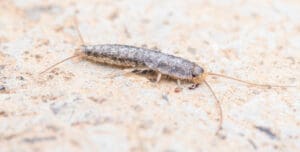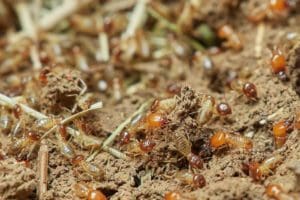

Going back to school after a summer or spring vacation is an exciting time for kids. It often means hugging friends they haven’t seen in a while and playing in close proximity in schools and in playgrounds.
While sending the kids back to school is often a relief for parents who can enjoy some time to themselves again, going back to school has a downside too. That downside is pests.
But we’re here to help.
Our guide to dealing with back-to-school pests will assist you in not only preventing a problem, but also to deal with back-to-school pests quickly and easily.
Lice
Lice outbreaks are the most common back-to-school infestations. Not only does the main lice season coincide with the back-to-school semester from fall to winter, but lice are also very easily transmittable. These little critters are spread through close human contact or by sharing items such as hair combs and brushes, hats and beanies, clothing, and pillows. Any item that comes into contact with the head and hair can spread head lice.
Lice outbreaks are most common in younger children. As they are more likely to share clothing, brushes and hats, young kids don’t usually concern themselves with lice. Younger kids are also more likely to be in close physical contact with friends as they play, wrestle, or even take a nap together.
So, while parents teach “sharing is caring”, with lice, it’s useful to take some preventative measures - even if no lice outbreaks have been reported by the school.
Here are some of the most important precautionary measures:
- Check your children’s hair often for signs of a lice infestation. Symptoms and signs include itchy scalp, visible eggs in the hair, and the lice themselves. You can use a fine-toothed comb available from any drug store to check for lice.
- There is no shame in having lice as outbreaks have nothing to do with cleanliness or being dirty. Most drug stores and even some supermarkets stock special lice shampoos. They usually don’t smell great, but they prevent and kill lice effectively.
- Wash everything your child uses on a daily basis. Clothing, hats, beanies and scarves, their backpack, bedding, and all outdoor gear such as jackets and coats should get washed often. Interestingly, lice can live for up to six hours underwater, so a warm, cool, or cold wash in the washing machine will not kill them. But a spin cycle in a hot dryer will do the trick. This works well for bed bugs too.
- Every evening, clean out your child’s backpack and check for bed bugs (especially the seams). If possible, it is better to hang the backpack on a peg to prevent bed bugs from getting into rugs or furniture.
- Keep the number of items your child takes to school and what they bring back to a minimum. Minimize the use of cloth or fabric items and pack all necessities in plastic containers and pencil cases.
- Use mattress covers that cover not only the whole mattress but also the box spring. These days, homeware stores sell mattress covers pre-treated for bed bugs too.
- In the event of a bed bug outbreak at school, wash clothing, bedding, and your child’s backpack daily.
- Like lice, bed bugs are not a sign of poor domestic or personal hygiene. Bed bugs will invade the cleanest of homes and they love hiding places. Clearing up clutter and vacuuming regularly is a good way of ridding your home of bed bugs.
- Just before any recess or outdoor sporting events, get your children to apply insect repellents containing either permethrin or DEET. Clothing can also be treated with a special clothing-only repellent containing at least 0.5% permethrin.
- If your children are going to an area with long grass or a wooded region, they should dress in long pants, socks and long-sleeved shirts that are light in color. Light colored clothing makes it easy to spot ticks before they get to the skin.
- Check your children after they have been outdoors in an area that is wooded and has long grass. Ticks wait for a host on the ends of long grass or on shrubbery. Some of the larger species can even be seen on the ends of grass, so talk to your kids about keeping an eye out for ticks too – two sets of eyes are better than one.
- The best way to remove ticks if they have latched onto the skin is to use tweezers. Grasp the tick as close to the skin as possible and pull the tick straight out gently. Do not twist the tweezers as you are pulling the tick out. Pull straight. At best, the tick will be removed entirely, but sometimes the tick’s head detaches itself and remains in the skin.






